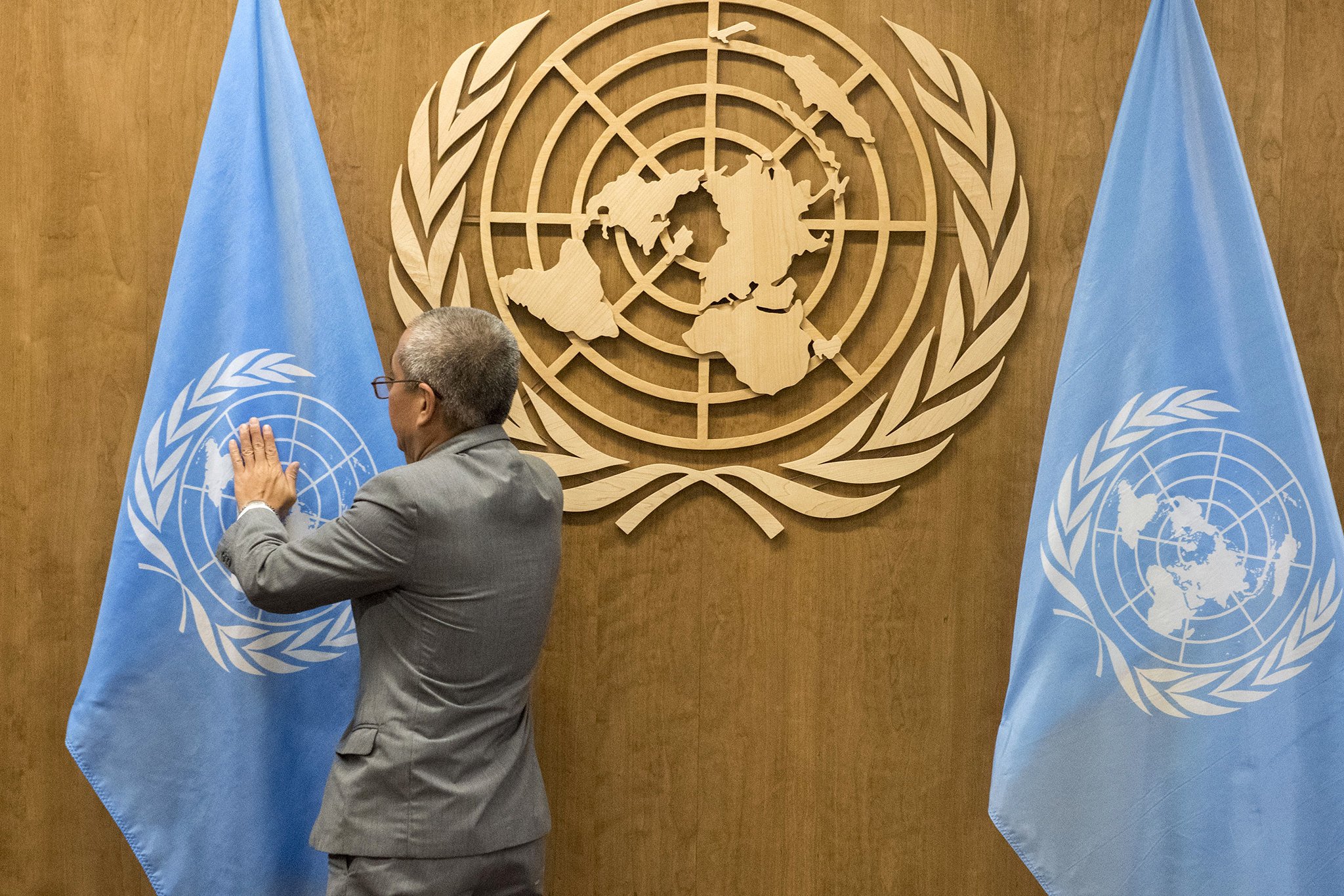LOAC and Artillery in Urban Areas: The Case of Gaza 2014
War would be easier if an enemy agreed to stand still. Unfortunately, in actual armed conflicts dynamic adversaries constantly strive to gain the tactical upper hand.
Published by The Lawfare Institute
in Cooperation With

War would be easier if an enemy agreed to stand still. Unfortunately, in actual armed conflicts dynamic adversaries constantly strive to gain the tactical upper hand. A recent briefing by a senior Israeli Defense Force (IDF) lawyer—part of this academic exchange—highlighted how the dynamic nature of armed conflict complicates issues relating to civilian casualties, in particular with regards to the use of high explosives (HE) in urban areas. The International Committee of the Red Cross (ICRC) and others worried about the toll to civilians in armed conflicts are especially concerned with the use of artillery in urban areas, and these critics often cite Israel’s Operation Protective Edge in Gaza in 2014. The U.S. Army Field Manual (V. 3-09, Sect. 1-115) acknowledges that in order to avoid collateral damage, the use of artillery in an urban setting requires “more detailed and restrictive rules of engagement.” Once those appropriately tailored rules are in place and observed, however, the laws of armed conflict (LOAC) do not further limit artillery’s use.
The ICRC cautioned states against using artillery in its most recent report on Challenges of Contemporary Armed Conflicts. And the organization is correct that HE artillery fires conducted without the detailed locational grid supplied by a field observer lack the accuracy of precision-guided munitions and, thus, can cause greater collateral damage. These factors should cause states to exercise care when employing HE artillery in crowded urban areas such as Gaza. According to ICRC legal advisor Christopher Harland—who spoke at a recent Georgetown Law meeting—such care should include a process for seeking reliable information on anticipated collateral damage. Notably, the U.S. often seeks legal advice before using artillery to target a military objective in a planned attack. Although the IDF receives legal advice on planned operations, including targeting with air-delivered munitions—as noted in this paper by Mike Schmitt and J.J. Merriam—it does not seek legal advice when artillery is used to support ground forces because of the exigent nature of those circumstances. Moreover, as Harland observed, tweaking a weapon’s payload and other features can minimize civilian casualties – for example, the use of slow-acting fuses can reduce shrapnel that injures civilians (a recommendation with which the IDF complies according to this Ministry of Foreign Affairs report). As a final safeguard, states must develop robust mechanisms to discipline personnel who fail to use the judgment that LOAC requires.
The ICRC’s argument founders, however, when it fails to account for the dynamic nature of armed conflict and acknowledge the vital tactical role of artillery in urban contexts. Recall, as Ben explained last week, that the LOAC principle of proportionality bars attacks where the expected harm to civilians is “excessive” in light of the military advantage reasonably anticipated. LOAC’s companion principle of precautions in attack requires use of all “feasible” methods to minimize collateral damage. (See Geoff Corn’s paper here). However, that feasibility analysis does not require any and all possible precautions. This distinction between what is feasible and what is possible goes to the heart of LOAC. Like all customary international law, LOAC emerges from state practice and state recognition of legally binding rules. The background assumption is that states will simply not accept rules as binding if they require measures that are not feasible under the circumstances. And excessively burdensome standards of attack risk creating perverse incentives for nonstate actors—like Hamas in Gaza—to embed warfighting capabilities deep within densely populated areas, which is itself a violation of LOAC.
As evidenced in Israel’s extensive report on the 2014 Gaza Conflict, continuous indirect artillery fires can hinder an enemy’s movements and undermine its initiative. Artillery can also flush out an enemy, depriving it of tactically advantageous hiding spaces. In addition, artillery can pin down an enemy that would otherwise readily maneuver to attack state forces’ vulnerable flank. In contrast, precision-guided munitions (PGMs) cannot readily provide continuous fires across a large area occupied by a massed enemy.
The ICRC report ignores—apart from some perfunctory cross-references—the tactical function of artillery in urban areas, and instead dwells on the humanitarian costs. The resulting proportionality analysis is incomplete. And that skewed analysis undermines the ICRC’s influence with states: states will resist ICRC recommendations that upset LOAC’s delicate balance between humanity and military necessity.
An unduly rigid view of the role of artillery can also subject commanders to inappropriate second-guessing. In the Gotovina case at the International Tribunal for the Former Yugoslavia, a trial chamber imposed an arbitrary test on the use of artillery in an urban area, despite clear evidence that the shelling had conformed to accepted standards of accuracy and had not in fact resulted in harm to civilians. After widespread criticism, the Appeals Chamber reversed the ruling. But had it been left to stand, the Trial Chamber’s ruling would have inhibited lawful warfighting and fractured the state consensus that underwrites LOAC.
To be sure, neither Israel nor any other state has a fool-proof recipe for the lawful use of artillery. In the 2014 Gaza campaign, for example, legitimate questions arose regarding the use of artillery to support the IDF’s campaign against Hamas positions in and around United Nations schools. Israel faced a serious tactical challenge, since the U.N. has acknowledged that Hamas often used schools, hospitals, and other protected sites for military operations. This Hamas tactic violates LOAC and put Israel in a no-win position: do nothing and take costly fire, or act and risk collateral damage that Hamas can exploit for “lawfare”—as leverage in the crucial war of perceptions.
Many of Israel’s responses to this dilemma during the 2014 Gaza campaign were measured and appropriate. But a handful of incidents raise more vexing questions about the boundary between appropriate and unlawful uses of artillery in urban areas. Consider an incident involving the U.N.’s Beit Hanoun elementary school, which killed 14 civilians who had sought refuge in the school and the wounded 93 others. (See the U.N. Board of Inquiry (BOE) report and the U.N. Human Rights Council report). According to the BOE report, U.N. personnel were in regular contact with officials of the Israeli Coordination and Liaison Administration (CLA). CLA officials also had regular contact with IDF commanders. CLA officials conveyed repeated warnings to the U.N. from the IDF to evacuate the area because of Hamas fire near the elementary school. These warnings were required under the principle of precautions in attack. However, those warnings did not discharge the legal responsibilities of IDF personnel who directed mortar fire at the vicinity of the school’s courtyard and front steps, where 450 civilians had massed to evacuate the school premises. (On the Human Rights Council report’s treatment of warnings, see Laurie Blank’s critique and Kevin Jon Heller’s response; on warnings generally, see this piece by former IDF legal advisor Pnina Sharvit Baruch and current advisor Noam Neuman.) The IDF’s independent Military Advocate General (MAG) ordered a criminal investigation after finding “grounds for a reasonable suspicion” that the shelling of the Beit Hanoun elementary school violated IDF rules.
Under LOAC principles of proportionality, the IDF may have been required to modify or forego its attack. The principle of precautions required that the IDF take any further feasible steps to safeguard the civilians at Beit Hanoun. Here, the feasibility inquiry is pragmatic. Under ideal tactical conditions, the IDF would have put “eyes” on the ground near the school to ascertain the precise source of Hamas fire and ensure that any fire directed at Hamas positions provided an adequate margin of safety for civilians. However, placing IDF spotters near the school would have been impracticable under conditions at the time, which included fierce fighting nearby.
The principle of precautions in attack might also require a more comprehensive process leading up to this particular targeting decision. IDF personnel had access, through CLA, to reliable data on the location of civilians at the Beit Hanoun elementary school. One outstanding factual question is whether IDF personnel sought this data from CLA prior to the shelling. If IDF personnel failed to seek such data, IDF personnel’s compliance with the principle of precautions would hinge on whether seeking such data was feasible under the circumstances. That feasibility inquiry would turn on the extent of the delay involved and the military advantage sacrificed by giving Hamas forces near the school more time to move to a new location or direct additional fire at IDF personnel. As always, feasibility would be judged from an ex ante perspective, based on IDF personnel’s reasonable assessment of military advantage and collateral harm before the action commenced. Such questions will likely be central for IDF’s independent MAG investigation.
The emphasis on process is common ground between the IDF and critics of the use of artillery in urban areas such as the ICRC. Sound targeting processes will not necessarily lead to the ICRC’s favored outcome of avoiding artillery use. However, adherence to process tempers military necessity with humanity, as LOAC requires. In addition, ex post processes such as the MAG investigation demonstrate that Israel is keeping its own house in order. Under the international law principle of complementarity, that proof rebuts the need for action by an international body, such as the International Criminal Court.
Moreover, as Ganesh Sitaraman has observed, in counterinsurgency operations adherence to process serves strategic objectives beyond LOAC by influencing local and global public opinion. The good will that adherence to process generates will not convert committed terrorist groups like Hamas. But over time, adherence to process may make the soil for such groups less fertile. As former IDF and Israeli government officials in the Israeli Council for Peace and Security have argued, curbing terrorist groups’ ideological appeal facilitates more reasoned dialogue with those who do not share Hamas’s devotion to extremist violence. Even if such dialogue fails to materialize, adherence to process distinguishes states combating terrorism from the extremists that those states seek to defeat. And preserving that dividing line in the use of artillery and other methods of warfare is a fight worth winning.




.jpg?sfvrsn=82a6ee72_5)
